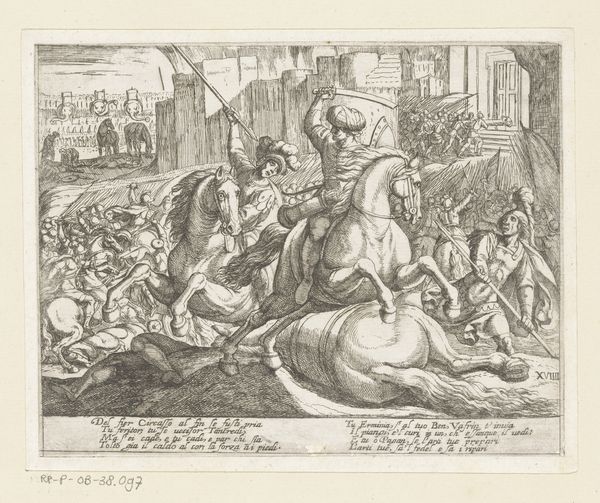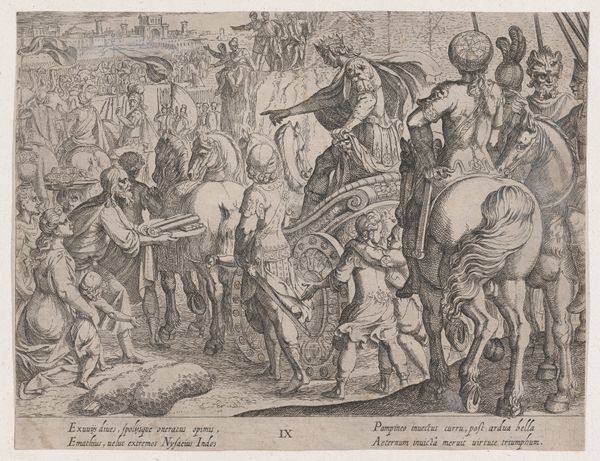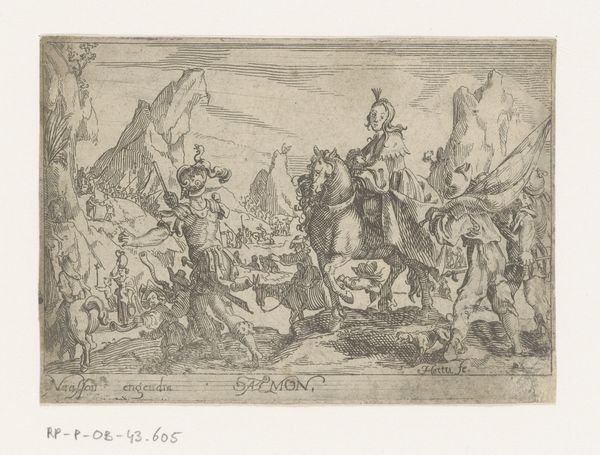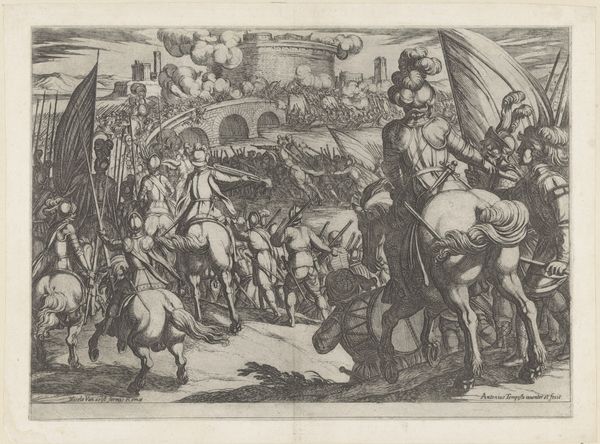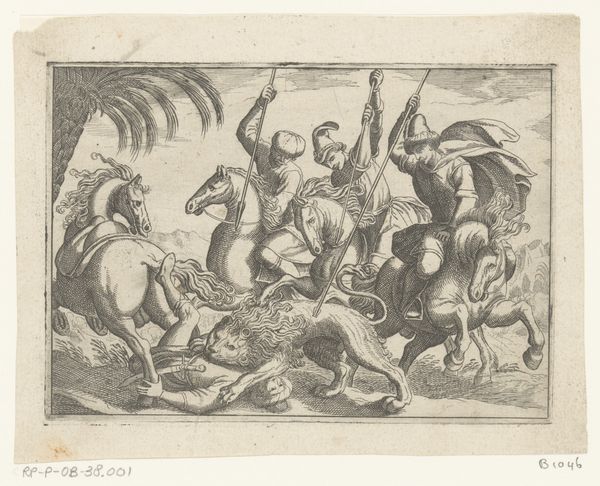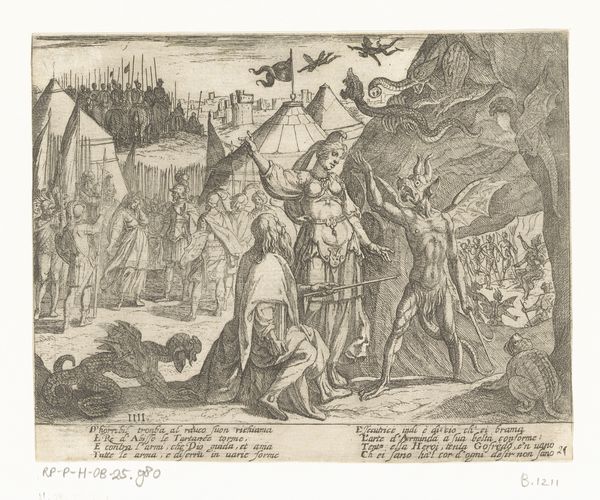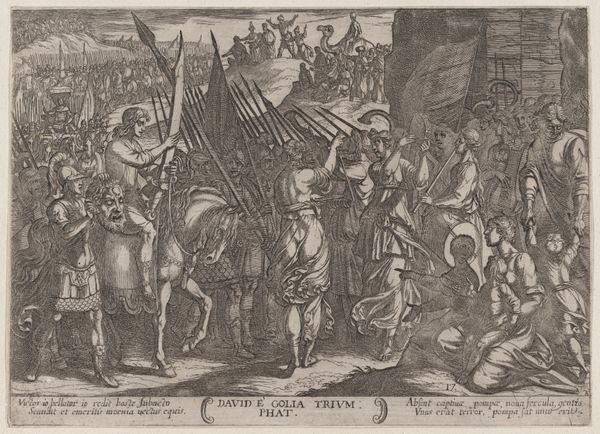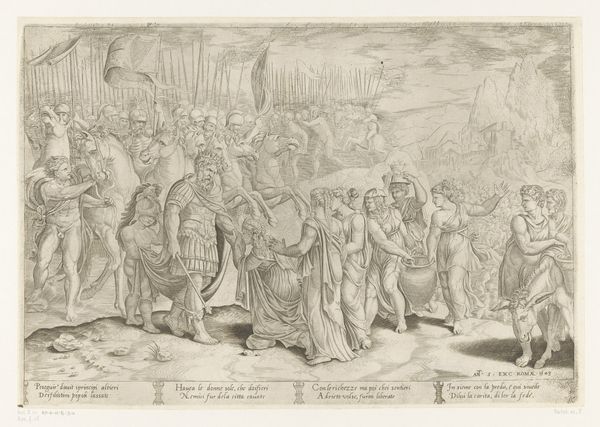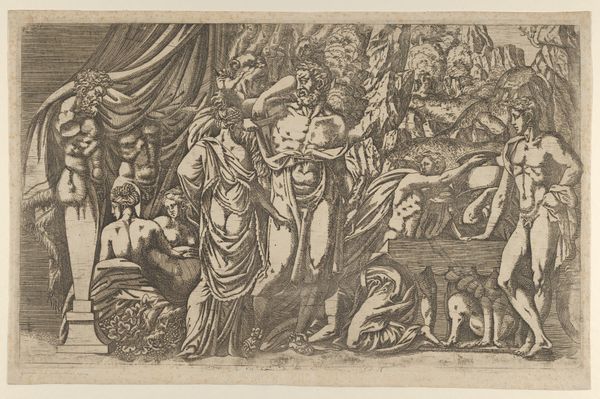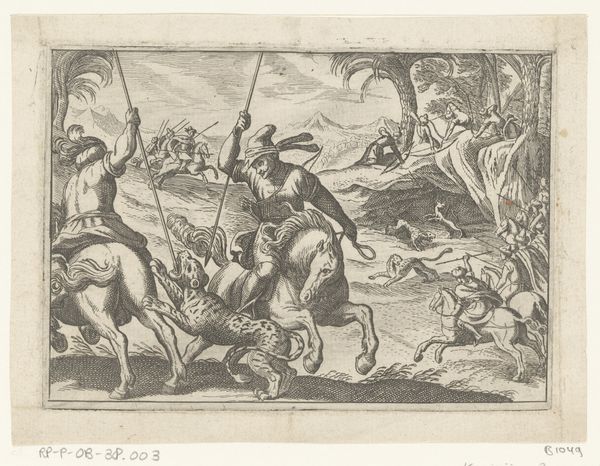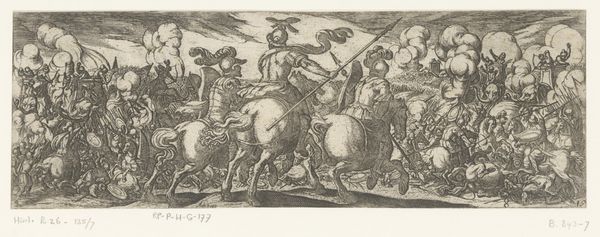
print, engraving
#
narrative-art
#
baroque
# print
#
landscape
#
figuration
#
history-painting
#
engraving
Dimensions: height 93 mm, width 147 mm
Copyright: Rijks Museum: Open Domain
Curator: Look at this engaging 17th-century print. The Rijksmuseum holds this engraving by Antonio Tempesta, made around 1605. It is titled "Hunters Catching a Giant Snake." Editor: The first impression is chaotic and charged. It feels less like a hunt and more like a frenzied, almost desperate confrontation with nature itself. Curator: Tempesta excelled at imbuing even relatively small works with dramatic tension and implied socio-political critiques. Think about the implications here—men banding together, equipped with specific weaponry, confronting the raw power of the natural world. The composition guides the eye from the shadowed depths of what appears to be a forest or cave to the frantic activity at the foreground. This artwork could be seen to convey the evergoing conquest of humankind over nature, in the quest of asserting and maintaining control, so strongly celebrated during the Baroque period. Editor: That reminds me of ancient myths – epic battles between gods and monstrous creatures, which were allegories of humanity's struggle for order and meaning. I can't help but think of the snake as a primal symbol of chaos, perhaps even of the "dark feminine" that many early cultures feared and tried to dominate, echoing familiar power imbalances across the social and gender spectra. I note that many hunters look European. Curator: Indeed! And these associations are likely no coincidence. Tempesta had the skill of weaving narratives steeped in artifice, where symbols function as multifaceted communication vectors that spoke of human struggle. The hunters' weapons, and even the tools of constraint—nets, perhaps, or traps—also tell stories. Are they ingenious instruments or a sign of humanity's overreliance on technology to resolve a situation for which their courage might prove inadequate? The details of Baroque culture reflect both progress and cautionary introspection. Editor: Introspection born out of hubris. What's truly intriguing is how little the composition focuses on the literal 'catch'. The human element – fear, struggle, and ultimately, triumph – takes precedence over celebrating the fallen creature itself. Is the snake truly dead or captured, I wonder. Curator: A fitting question, indeed. By reflecting on these works, we prompt reflection on both how our societies worked then and how those reflections speak to today's structures. Thank you for helping me delve deeper. Editor: Thanks; thinking about the echoes of these symbols throughout history provides meaningful lessons on our shared visual language and the values and preoccupations, we consistently pass down.
Comments
No comments
Be the first to comment and join the conversation on the ultimate creative platform.
